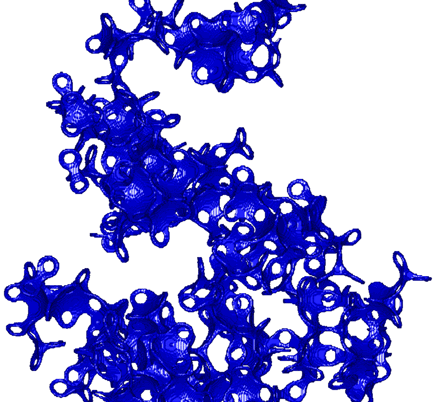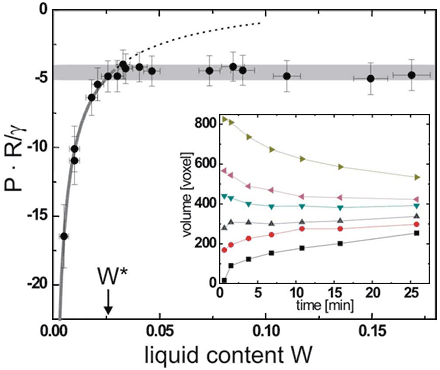- Home
- News
- Spotlight on Science
- Morphological clues...
Morphological clues to the stability of wet granular piles
02-05-2008
When dry sand is mixed with water, it acquires a visco-plastic texture, stiff enough for sculpting sand castles. The well-known experience at the beach that the mechanical properties of this material do not depend critically on its liquid content is of great potential importance for understanding wet granular systems in general. The insignificance of the water content is particularly unexpected in view of the enormous geometric complexity of the liquid structures which form inside the granular pile, and change dramatically with the liquid content.
Share
This riddle has now been solved by researchers from the MPI for Dynamics and Self-Organization, Göttingen (Germany), the ESRF, the Australian National University at Canberra, and the Universtity of Erlangen-Nürnberg (Germany) in a study they carried out at the High Energy Scattering Beamline ID15.
 |
|
Figure 1. X-ray microtomography of a liquid cluster in a dense pile of glass beads with 0.8 mm diametre at a liquid content of 11% (only the liquid is shown). |
The geometrical structure of the liquid was analysed by means of X-ray microtomography. Figure 1 shows an image of a three-dimensional liquid cluster formed in a pile of glass spheres. It turned out that the liquid forms strongly ramified objects with a large liquid air interface. This can be seen most clearly in Figure 2, where all liquid clusters found in the sample are presented in the plane spanned by their volume (V) and their total interface (S).
The size of the capillary bridges was used as a probe for determining the liquid pressure inside the pile. It was found that the pressure levels off when the liquid occupies about 2.5 percent of the pile volume (Figure 3). As the liquid content is further increased, the cohesive force between particles cannot grow, since the projected area over which the pressure acts upon the particle is unchanged, giving rise to the observed constancy of the mechanical stiffness of the material. Similar results were also obtained in measurements with sand grains, which are more representative of natural granular materials.
Principle publication and authors
M. Scheel (a), R. Seemann (a), M. Brinkmann (a), M. Di Michiel (b), A. Sheppard (c), B. Breidenbach (d), S. Herminghaus (a), Morphological clues to wet granular pile stability, Nature Materials 7, 189-193 (2008).
(a) Max Planck Institute for Dynamics and Self-Organization, Göttingen (Germany)
(b) ESRF
(c) Dept. Appl. Math., Australian National University, Canberra (Australia)
(d) Institut für Theoretische Physik, Universität Erlangen-Nürnberg, Erlangen (Germany)
What's related?
Beamline ID15





